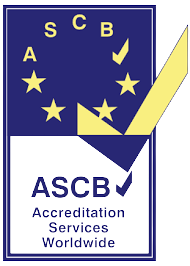Table of Content
Introduction
When you think of cross-training employees, know that it means your staff learns new skills beyond the job they’re hired for. The means to program cross-training can be through:
- Job shadowing
- eLearning
- Cross-teams collaborations
- Direct mentoring
- Training sessions, workshops, and seminars
All this and much more are possible when organisations invest time and creative intellect in designing such programs. So, this blog post teaches you the latest benefits of executing cross-training sessions for your employees.
If you’re looking to invest in such initiatives, learn about its advantages below first. Then, make an educated decision to create exponential impact at every level.
Want to skip the post?

What are the top benefits of cross-training employees?
- More exposure for your teams
Cross-training helps employees get the exposure required to prepare them for future challenging roles. They get used to working with different teams and handling challenging roles, even for a minor or short-term project.
This builds their muscle memory to work under the pressure of multitasking, having honed a laser-focused approach, and meeting deadlines like a pro.
More than that, employees get exposure to fields they might not have been familiar with before. This exposure helps them grow mentally and intellectually so they can make better decisions about their future at the firm.
- Continuous collaboration
Organisations often lack purposeful collaborations because these require people to be on the same page. That becomes challenging when different people from dissimilar backgrounds are working together.
However, when such collaboration occurs often, even these people get to know each other well. Initial roadblocks of needing to understand where the person is coming from are mitigated and handled with maturity over the period.
However, that requires the team and project manager to communicate the end goals clearly when giving their team members the unified and interactive intranet to collaborate organically, whenever required.
- Amplified employee engagement
Employee engagement accelerates as and when employees get the required training in a different setting. It breaks their mundane routine. They learn new things and interact with people they usually do not have an opportunity to connect with.
In fact, cross-training employees helps one another make new friendships at the workplace. Many people get acquainted with one another’s dislikes and likes.
They know what ticks the other person while working on a shared project or learning a module together, despite belonging to different departments or business units.
- Faster turnaround of challenging projects
The possibility of faster turnaround time increases for completing challenging projects with no precedence or previous example/case study for the organisation.
Employees can discover new charts themselves and work to improve their timely delivery when they are competing against one another in a healthy manner.
- Expanding the talent pool and expertise
Cross-training employees must be voluntary at times, depending on the nature, complexity, and duration of the learning experience or program. However, when people show up or sign up for this training, HR professionals get exposure to an expanding talent pool and expertise.
Most times, people do not know themselves if they would like to learn a thing or two. However, when the opportunity strikes, often unexpected people sign up for it to upskill themselves.
This exposes the HR leader and their teams to new talent within the organisation. They can further utilise the same person for another job if they’re taking the learning sessions seriously.
Such insights into the learning effectiveness are enabled with uKnowva’s eLMS and its analytics.
- Unlocking discretionary effort
Discretionary effort is nothing but how much an employee would want to put in extra effort. They are hired for a reason, we all agree. However, it takes a courageous, bold, and lively employee to take up extra work and carve a new path for themselves within the same organisation.
It means the employee is eager to stay there in the long run. They want to envision themselves in better places and handle more challenging roles in the future.
Organisations can unlock the same zeal and eagerness by providing their best talent with cross-training opportunities. This will enable and empower the organisation as a unit to tread in uncharted waters and reach out to untapped markets with ease and calculated risks.
- Elevated eagerness to learn and grow with agility
Cross-training employees builds a habit of learning on the move. Employees are themselves eager to learn and show less resistance to change.
It helps employers and reporting managers to bring frequent changes into the processes to refine them to the last level with automation, AI-driven, and EI-powered HRMS software like ours.
Moreover, it exposes the workforce to newer possibilities to grow non-linearly. They can develop a wholesome career for themselves with the new set of skills within the same organisation with cross-training programs and initiatives.
This agile mindset helps employees stay employable in the long run in the same industry. When the organisation can feed their hunger to learn more, they stick around and are more likely to become loyalists eventually.
- Reduction in skill gaps or talent shortages
Organisations build future workforce by providing cross-training to their existing staff.
With this type of training, especially with modules from eLMS or job shadowing processes, they can prepare the staff to handle and conquer ad hoc tasks coming their way.
Then, the organisations do not need to borrow or buy the talent from the marketplace extensively.
They can create an internal marketplace to mobilise the talent from one process or project to another without increasing the cost of hiring or developing the same person.
Conclusion
We got to know about the latest 8 advantages of cross-training employees. Explore more when implementing the smart, interactive, and insightful eLMS module in your organisation.
Give your employees the opportunity to outgrow themselves. Build a talent marketplace from scratch and continuously without depending on the already impulsive and rapidly changing job market.
FAQs on Cross-Training Employees
What types of skills can be covered in cross-training?
Cross-training can cover a range of skills, including technical skills, soft skills (communication, teamwork), and industry-specific knowledge. The selection depends on the organisation's needs and the individual employee's development goals.
How can an organisation implement cross-training effectively?
To implement cross-training effectively, organisations should assess the skills needed across different roles, create a comprehensive training plan, communicate the benefits to employees, and provide ongoing support and feedback.
Is cross-training suitable for all industries?
While the concept of cross-training is applicable across various industries, the specific skills and methods may vary. It is particularly beneficial in dynamic and fast-paced environments where workforce versatility is crucial.
Can cross-training be done remotely?
Yes, cross-training can be conducted remotely using virtual platforms and e-learning modules. Organisations need to adapt training methods to suit remote work settings.












